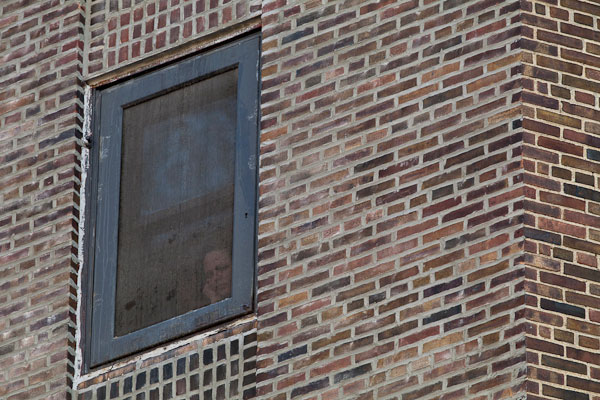
Photo by: Marc Fader
An inmate looks out from Bayview Correctional Facility in Manhattan. In New York’s prisons, there is a tension between the rights of inmates — for whom prison is an involuntary home — and the rights of guards, whom it is a workplace.
This project was conducted with generous support from the Fund for Investigative Journalism.
In the late 1970s, when Thomas Terrizzi began working as an attorney in the Elmira, New York office of the newly formed Prisoners’ Legal Services, sex between corrections officers and inmates wasn’t an issue that prisoners complained about to PLS, then the only New York organization specializing in prisoners’ rights. The state had very few female inmates then. In fact, some of the correctional facilities that currently house only women then housed men, either instead of women or in addition to them. Cross-gender supervision of inmates (in other words, men supervising women or women supervising men) was rare then, with most female inmates being supervised by women. Since 1955, the U.N. Standard Minimum Rules for the Treatment of Prisoners had banned cross-gender supervision. The men who worked at Bedford Hills before 1976 worked not in the housing units but in areas including the grounds, the school and the library. Men’s prisons also had few female officers then.
Partly because most inmates were men, most of the complaints PLS received then came from male inmates. At the time, one of their most common complaints was that guards were using excessive force. Female inmates complained to PLS so rarely during that time that Terrizzi doesn’t remember handling any of their complaints. “I think women just generally didn’t complain much … out of fear of retaliation,” Terrizzi says.
But in 1976 New York’s prisons underwent policy changes that would reverberate in sexual-misconduct allegations decades later. That year, DOCS—in an effort to comply with the equal employment law codified in Title VII of the Civil Rights Act of 1964—decided to allow male officers at Bedford Hills to supervise the women’s living and sleeping quarters. The first male officers began those jobs in February 1977.
Within months, the opening salvo in the statewide battle to define the parameters of cross-gender supervision was fired, when 10 female inmates filed a lawsuit alleging that male officers’ ability to view them naked in their cells and showers and on their toilets violated their privacy rights.








